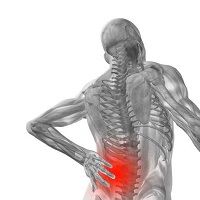Article
Predicting Spinal Surgery Patient Satisfaction
Author(s):
Researchers recently studied a cohort of patients who had undergone surgery for back pain to determine if they could identify patient-related factors or patient-reported outcomes could accurately predict dissatisfaction after spinal surgery.

Reduced pain and disability are good indicators of whether surgeries for spinal degenerative disease were successful, according to the results of a study published in Neurology.
Researchers from the Vanderbilt University Medical Center analyzed one year of follow-up data on 1,645 patients undergoing surgery for degenerative disease of the upper (cervical) and lower (lumbar) spine. The researchers aimed to evaluate whether patient-related factors or patient-reported outcomes could predict dissatisfaction after spinal surgery. The surgery was elective, the researchers noted. The patients were enrolled in a prospective longitudinal study registry for two years prior. The researchers compared data from standard rating scales for disability and neck, back, arm, and leg pain collected from the patients before the surgery and one year post surgery.
A majority of the patients reported satisfaction with the surgery one year later (83 percent). But the researchers wanted more information — they wanted to be able to predict whether patients would be satisfied or dissatisfied with the outcomes.
If a patient did not achieve at least 15 percent improvement on a disability scale, the researchers considered them to have “minimal clinically important difference” and noted they were four times more likely to be dissatisfied with the outcomes of their procedure. Those patients who didn’t reach the desired percentages of change in their pain scores were three times more likely to be dissatisfied with their surgery. Medicaid or uninsured patients and patients with higher baseline pain and disability scores rated their satisfaction lower.
Patients with symptoms of depression or anxiety prior to the procedure were less likely to achieve at least 15 percent improvement and had lower satisfaction rates. But the mental health factors were less significant once researchers were able to adjust for initial pain and disabilities scores, they determined.
“Identifying modifiable factors that improve satisfaction is of utmost importance,” the researchers wrote, especially because the patient satisfaction scores are being used more and more as a measuring stick for quality of medical care. And sometimes, the scores are used to determine the amount of reimbursement for the care provided.
“Surgical ineffectiveness was a strong independent factor of dissatisfaction,” the authors continued. The authors reiterated that the findings demonstrated that amount of improvement was directly related to the amount of satisfaction the patients felt.
“Individualizing the patient preoperative counseling on the basis of these patient-specific factors can improve patient satisfaction with outcomes,” the authors said, adding that the study may be able to help identify patients at risk for dissatisfaction of their spinal care outcomes in the future.





